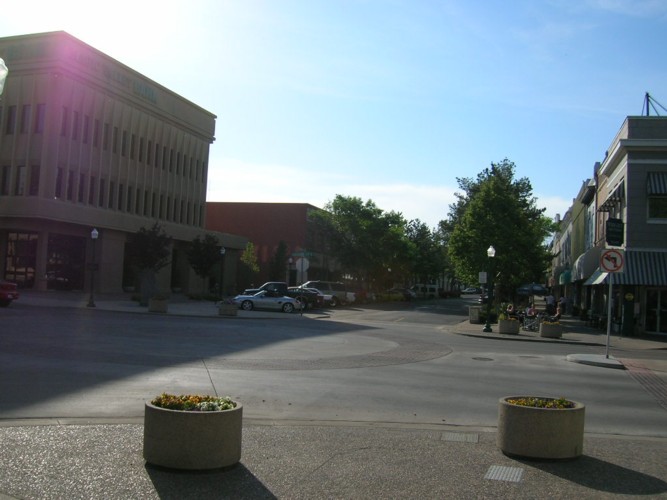
Moving to Twin Falls, Idaho: A Comprehensive Relocation Guide
Considering moving to Twin Falls, Idaho? This South Central Idaho city offers agricultural heritage, outdoor recreation, and affordable living. With approximately 52,000 residents in 2025, Twin Falls combines small-city character with Snake River Canyon and the Magic Valley’s regional hub.
Demographic Profile to Consider If Moving to Twin Falls:
Twin Falls’ 2025 population is approximately 52,000 residents in this Twin Falls County city in South Central Idaho along the Snake River Canyon rim. The median age is around 35 years, with families, agricultural workers, professionals, and retirees. The population is approximately 82% White, 15% Hispanic, 2% Native American. Twin Falls features the spectacular Snake River Canyon with Shoshone Falls (“Niagara of the West”), agricultural surroundings, growing downtown, and serves as the Magic Valley’s commercial hub. The city attracts families seeking affordability, agricultural industry workers, and those wanting small-city Idaho living with outdoor access. Twin Falls appeals to those prioritizing affordability, agricultural employment, and authentic Idaho character. The community values agricultural heritage, family atmosphere, and outdoor lifestyle. Find trusted local services for moving, living, and working in Twin Falls.Twin Falls Relocation Directory
Cost of Living to Consider If Moving to Twin Falls:
Twin Falls offers exceptional affordability for Idaho. Median home values range from $310,000 to $410,000 in 2025, among the state’s most affordable markets while providing quality living and recreation access. The median household income is approximately $58,000. Rental properties average $1,100 to $1,600 monthly. Idaho’s state income tax is flat 5.8%. Overall cost of living is very low, making Twin Falls highly attractive for families, agricultural workers, retirees, and those seeking affordable Idaho living. The city provides tremendous value with outdoor recreation and small-city amenities. Housing costs create exceptional accessibility for diverse income levels. The affordability and quality of life attract families and retirees seeking value.
Economy and Job Market:
Twin Falls’ economy centers on agriculture, food processing, healthcare, retail, and distribution. Major employers include Chobani (yogurt manufacturing), Clif Bar, Glanbia Foods, dairy operations, St. Luke’s Magic Valley Medical Center, and the College of Southern Idaho. Agriculture including dairy, potatoes, sugar beets, and cattle drives the regional economy. Food processing facilities operate throughout the valley. Retail serves the regional population. The economy supports the agricultural Magic Valley. Typical industries include agriculture, food processing, healthcare, retail, and logistics. The stable agricultural base provides employment though wages reflect rural economy.
Education:
Twin Falls School District serves city students with schools including Twin Falls High School and various elementary and middle schools. School quality is adequate. The College of Southern Idaho offers associate degrees, workforce training, and athletic programs. The educational infrastructure serves the community with CSI providing cultural programming and education access.
Recreation and Lifestyle:
Twin Falls offers spectacular outdoor recreation centered on the Snake River Canyon with Shoshone Falls plunging 212 feet (higher than Niagara during peak flow), the Perrine Bridge (BASE jumping destination), and canyon rim trails providing stunning views. Residents enjoy hiking, mountain biking on extensive trail systems, rock climbing, fishing, and the Snake River providing water access. The area’s clear skies attract stargazers. Nearby Craters of the Moon National Monument and Sun Valley (90 minutes) provide day trip destinations. Downtown Twin Falls features restaurants, breweries, and the historic Orpheum Theatre. The Magic Valley Speedway offers racing. The lifestyle emphasizes outdoor recreation, agricultural heritage, affordable family living, and small-city character. The four-season climate enables varied activities with less snow than northern Idaho. The community values agricultural roots, family atmosphere, outdoor access, and authentic Idaho living. Living in Twin Falls means accepting geographic isolation (2 hours to Boise, limited direct flights), agricultural economy wages, and small-city limitations while enjoying spectacular canyon scenery, exceptional affordability, and Idaho small-city character with world-class natural features in your backyard.
Healthcare and Services:
Twin Falls residents access comprehensive healthcare through St. Luke’s Magic Valley Medical Center providing full-service hospital care as the regional medical center. The healthcare infrastructure serves the Magic Valley with quality medical services.
Transportation:
Twin Falls is accessed via Interstate 84, U.S. Highway 93, and various corridors. Magic Valley Regional Airport provides limited commercial service. Twin Falls Transit operates limited bus routes. Most residents use personal vehicles. Typical travel times to Boise or other regional destinations vary with some isolation. The location provides access to Sun Valley and Southern Idaho recreation.
Conclusion:
Moving to Twin Falls in 2025 offers affordable South Central Idaho living with Snake River Canyon, agricultural heritage, and small-city character. The city’s combination of Shoshone Falls beauty, low housing costs, and outdoor recreation makes it ideal for families, agricultural workers, and budget-conscious residents seeking authentic Idaho where canyon grandeur meets affordability and agricultural heritage defines life in the Magic Valley’s regional hub.

